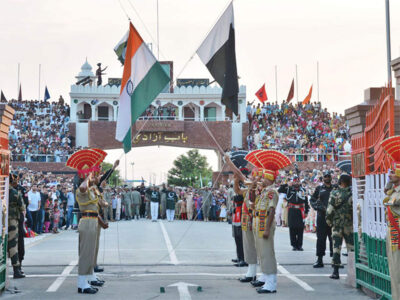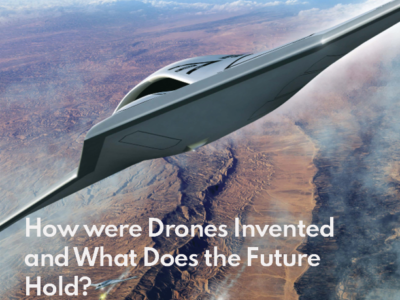Syed Ali Zia Jaffery
Revamping Arms Control: Five Near-Term Proposals
Author(s): James M. Acton, Thomas D. McDonald, and Pranay Vaddi,
Publisher: Carnegie Endowment for International Peace
In his famous No-Cities Speech, one of the most influential figures in United States’ nuclear excursion, Robert McNamara, said: “We look forward to the prospect that through arms control, the actual use of these terrible weapons may be completely avoided. It is a problem not just for us in the West, but for all nations that are involved in this struggle we call the Cold War.” Arms control, especially since the Cuban Missile Crisis, has indeed been deemed critical to reducing the risk of escalation with nuclear undertones, both inadvertent and accidental. Today, the importance of giving arms control another chance has increased more than ever. This is primarily because the arms control architecture created during the Cold War is slowly crumbling, nuclear competition is all-set to stage a comeback, and great-power rivalry is all but a dominant feature of the evolving global order. With three of the five members of the NPT-recognized nuclear club embroiled in deterrence equations, all states have stakes in whatever becomes of these dyadic relations going forward. The level of interest germinates from the mutual interest in creating an environment in which chances of inadvertent and accidental escalation leading to nuclear war(s) are minimal.
The question that is often asked is this: how can adversaries (Russia, U.S., and China) ensure that the ‘absolute weapon’ is not used, without their needing to give up their crown jewels? In a recent Carnegie Endowment working paper titled “Revamping Arms Control: Five Near-Term Proposals”, James M. Acton, Thomas D. McDonald, and Pranay Vaddi, have proposed a series of steps that could resuscitate arms control between Beijing, Moscow, and Washington. The five-proposal-long list is not exhaustive, and is duly focused on the short term in a bid to create a foundation for substantive negotiations in the future. The authors have rightly aligned their panaceas with the increased likelihood of the misperceptions-driven arms race between Washington and Moscow, and, to a degree, between Washington and Beijing. While the ‘rapidity’ of China’s nuclear developments alluded to by the authors will certainly not be enough to propel an arms race, given the huge difference between numbers, fear and ambiguity will figure into United States’ calculus. The U.S., it must be noted, has already labelled the strategic threats that both China and Russia pose as critical for the country to bring in more flexibility and responsiveness. The U.S. Nuclear Posture Review 2018 states:
While the United States has continued to reduce the number and salience of nuclear weapons, others, including Russia and China, have moved in the opposite direction. They have added new types of nuclear capabilities to their arsenals, increased the salience of nuclear forces in their strategies and plans, and engaged in increasingly aggressive behavior, including in outer space and cyber space.
All this, coupled with the belief that the adversary is out to undermine one’s nuclear deterrent, could have dangerous repercussions for crisis stability. The authors are mindful of the deleterious effects of the veritable concerns about vulnerability. They argue:
In a deep crisis or a conventional conflict between the United States and China or Russia, the concerns about force vulnerability that drive arms racing could spark inadvertent escalation. This risk is increasing as a result of the growing entanglement between the nuclear and nonnuclear domains.
The authors have correctly summarized the results of lackluster transparency into two damaging phenomena: nuclear arms racing and inadvertent escalation. The study outlines, and fittingly so, as to how and why arms control could help address this set of dangers. The authors have included all forms of military cooperation in their working definition of arms control. That these recommendations are being presented for discussion after a bad patch for arms control is perhaps a good enough reason why the scope of military cooperation used in this paper is wide.
After making a cogent case for revitalizing arms control to concomitantly reduce risks of inadvertent escalation, arms racing, and, resultantly, nuclear war, the authors highlight why Moscow and Washington must extend New Start. However, they accurately advise against tinkering with and expanding the scope of the Treaty, given that being over-ambitious could rupture negotiations. In its current form, the Treaty, according to the authors, does not constrain some of the most conspicuous propellants of arms racing and inadvertent escalation, to include Russia’s Non-Strategic Nuclear Weapons(NSNWs), China’s nuclear forces, and U.S ballistic missile defenses. They look askance at the prospect of a treaty filling these lacunae. Thus, they have propounded a 5-step plan, which is akin to putting in place robust structures of confidence-building measures(CBMs) and Nuclear Risk Reduction Measures(NRRMs) through bringing transparency back in the scheme of things. The authors advocate for a hybrid approach: a treaty to curtain strategic arms should be buttressed by transparency-driven CBMs. The authors suggest the following measures that Washington, Moscow, and Beijing can take to bring in a semblance of stability, reduce chances of escalation, and slow down arms racing:
- A U.S.-Russian data exchange for SLCMs and nonnuclear SLBGMs
- A U.S.-Russian transparency regime for empty actual or suspected warhead storage facilities
- A U.S.-Russian confidence-building regime for European Aegis Ashore ballistic missile defense installations
- A Chinese-U.S. fissile material cutoff and transparency regime
- A trilateral ballistic missile and space launch notification agreement
Increasing the degree of openness will indeed be instrumental in lessening some of the trepidations that create escalatory pressures on states. All the recommended measures, if implemented, can remove many of the ambiguities that fuel reckless peacetime and crisis behavior, mainly due to overestimation and/or underestimation of capabilities. The first three ideas aim at increasing the quantity of certitude in the strategic understanding and appraisal between the U.S.Russo dyad. Absent certainty, the likelihood of misreading each other’s intent, especially during the fog of war(crisis), could prove deadly. The authors’ thoughts have factored in the linchpin of deterrence: mutual vulnerabilities. In other words, these options would, if exercised, by no means, eat into the balance of existing vulnerabilities, but will rather help stop add-ons to their current basket.
The authors do a good job in laying bare the political challenges that all parties will have to contend with when cogitating on these options. For instance, the authors succinctly delve into the roadblock that political recalcitrance could create, one out of which emanates from the issue related to defining strategic weapons during SALT 1 negotiations. Thus, for all the talk about the practicality of these measures, differences will be harder to bridge, especially at a time when the winds of geopolitics are rigged against efforts aimed at reinvigorating substantive discussions between adversaries.
The study could have focused more on the geopolitical hindrances. A two-way fissile material cutoff by Washington and Beijing, is certainly an idea that, if considered, could be a win-win for both Washington and Moscow, as lucidly analyzed by the authors. However, in a milieu marred by incendiary rhetoric, coupled with China’s aversion, and U.S. recent track record, proposals like this will likely not gain much traction. This is why politically-binding arrangements are a double-edged sword. They are typified by ease of entry and exit, and are thus, at the mercy of vacillations.
As corroborated by the history of arms control, one of the keys to successful parleys is to keep goals modest. Notwithstanding structural impediments, the ideas put on the table in this study sit well on the pragmatism-idealism scale, and are, as the authors acknowledge, neither the final word nor the be-all and the end-all of a robust arms control scaffold of arms control. The study has indeed provided a blueprint that, if followed and pushed through the hierarchies, could give a fillip to arms control, a mechanism that had taken a hit over the years.
The authors dispel the notion that “political barriers are immutable.” However, a parity-induced sense of security, which allowed both Washington and Moscow to make headways during the halcyon days of arms control, is perhaps not perceived to be as high today. This is why the authors are right in proposing steps that balance the need for maintaining an effective deterrent with the desire to prevent arms racing, escalation, and nuclear risks. The authors write: “Nuclear deterrence requires there to be some risk of escalation—otherwise a nuclear threat could never be credible.” Thus, at the end of the day, it is the perceptions of the optimal level of deterrence that will determine how and when parties discuss arms control with a view to ushering in an environment of deterrence, crisis, and strategic stability.








Comments